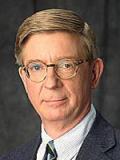
America's economy has now slouched into the eighth year of a recovery that demonstrates how much we have defined recovery down.
The idea that essentially zero interest rates are, after seven and a half years, stimulating the economy "strains credulity," says James Bullard, president of the Federal Reserve Bank of St. Louis. But last month he and other members of the Federal Reserve Board understandably felt constrained to vote unanimously to continue today's rates for an economy that created just 38,000 new jobs in May, and grew just 0.8 percent in the first quarter, after just 1.4 percent in the previous quarter.
The grim news is not that the economy continues to resist returning to normal. Rather, it is that this "current equilibrium" (Bullard's phrase) is the new normal. If 2 percent growth is, as he says, "the most likely scenario" for the foreseeable future, the nation faces a second consecutive lost decade -- one without a year of 3 percent growth.
N. Gregory Mankiw, Harvard economist and chairman of George W. Bush's Council of Economic Advisers, writes in The New York Times that in the last decade the growth rate of real GDP per person averaged 0.44 percent, down from the historical norm of 2 percent: At 2 percent, incomes double every 35 years; at 0.44 percent, about every 160 years.
With the recovery aging, Larry Summers, former treasury secretary, guesses that "the annual probability of recession is 25 to 30 percent." When it arrives in a near-zero interest rate environment, the Fed's monetary policy, normally its countercyclical weapon -- it usually reduces rates at least four percentage points in a recession -- will be unable to cushion the shock.
Bullard says "labor market data is giving us different" -- he means more encouraging -- "signals than the GDP data." But surely the fact that the official unemployment rate is down to 4.7 percent is less important than this: The workforce participation rate has plunged, which has been only partly because of the population aging -- baby boomers retiring. If labor participation were as high as when Barack Obama became president, the unemployment rate would be over 9 percent.
Besides, it is unclear how to distill the significance of traditional data for an untraditional economy. For example, six-year old Uber, with just 6,700 employees (not counting drivers), has a public market valuation ($68 billion) $13.8 billion more than that of Ford Motor Co. (201,000 employees globally).
Certainly very low interest rates, by driving liquidity into equities and assets in search of higher yields, are exacerbating the inequality that is disturbing American politics with distributional conflicts. Homeowners, and the 10 percent of Americans who hold 81 percent of the directly and indirectly owned stocks (the stock market is 160 percent higher than its 2009 low), are prospering. Those whose wealth comes from wages -- formerly, the Democratic Party's base -- are losing ground. No wonder Hillary Clinton vows to "expand" Social Security, never mind its rickety financial architecture.
The public's perception, and perhaps the Fed's conceit, is that the Fed "manages" the economy. "We are," Bullard says, "our own worst enemy." By taking credit when things go well, it acquires responsibility in the public's mind "for everything that happens."
Bullard says "the most disturbing number" about the economy is that for five years productivity has grown only half a percent a year. Still, he is not among those who are in a defensive crouch about immigration: "We have a great thing happening in that a lot of people want to come here and work."
Neither does he subscribe to Robert Gordon's hypothesis (developed in "The Rise and Fall of American Growth") that we must abandon the unrealistic growth expectations we acquired as a result of an exceptional century (1870-1970) of transformative developments (e.g., electrification, the internal combustion engine, urban sanitation) that have no foreseeable analogues. Bullard imagines someone a millennium ago saying: Fire has been harnessed, the wheel and agriculture have been invented -- we already have most of the possible growth from new technologies.
Besides, Bullard says, it takes a while for technologies to "diffuse through the economy." And some of the diffusion -- in leisure, in richer living experiences (social media; smartphones and their apps) are not captured in GDP statistics. Perhaps that helps to explain why Obama's job approval has reached 52 percent at a moment when she who seeks to replace him concedes that the economy is so anemic that her husband will be assigned to "revitalize" it.
George Will's email address is georgewill@washpost.com.
(c) 2016, Washington Post Writers Group


